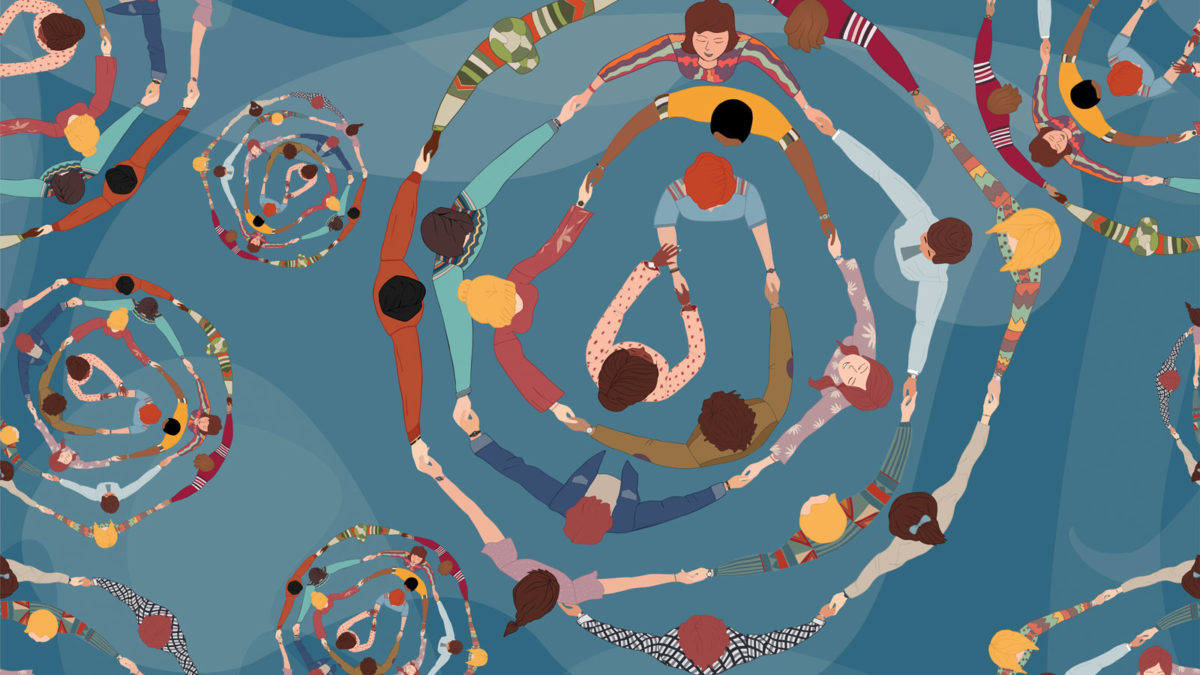
It Takes a Village
The Case for Distributed and Agile Mentoring
January/February 2023
Download This Article (.pdf)
Mentoring brings together the best of what professional development has to offer: trusted personal relationships where practical and interpersonal skills are built and refined. The sharing and transfer of knowledge through camaraderie is one of the most effective forms of learning.
Unfortunately, finding a suitable mentor is akin to finding a needle in a haystack. Overcrowded networking events might give way to a coffee meeting or two, but the odds of a true mentoring relationship developing from these types of surface-level exchanges are slim to none. Traditional networking provides exposure, but most young lawyers and law students will never find a mentor this way. And in any case, one mentor isn’t enough to really send a mentee on a successful professional pathway. Modern mentoring recognizes that it takes a village to raise a lawyer.
Two emerging mentoring concepts that fully embrace this realization are distributed mentoring and agile mentoring. Both of these concepts eschew traditional networking and instead help new lawyers connect with a village of mentors through small-group mentoring and efficient communication mechanisms.
What is Distributed Mentoring?
Distributed mentoring is rooted in the concept of co-mentoring. Unlike traditional mentoring, co-mentoring does not assume the mentor has superior knowledge or experience.1 Instead, co-mentoring colleagues work in “thought partnerships” to support and extend each other’s professional development.
Co-mentoring has progressed into the broader concept of distributed mentoring. One of the core principles of distributed mentorship is that you are on an ever-evolving journey that requires guidance from direct engagement with many people and many sources of information.2 Thus, the main distinction between co-mentoring and distributed mentoring is that co-mentoring relies on human capital as the sole source of mentorship, while distributed mentoring encourages mentees to draw from a variety of information sources in addition to human capital.
The idea that mentoring can occur through such varied sources as literature, technology, podcasts, online content, and co-mentoring is relatively new to a profession steeped in traditional learning methods, but a modern and diverse legal profession requires a modern and diverse set of mentoring tools. A few of the most powerful sources of distributed mentoring are discussed below.
Cross-Functional Mentoring Teams
Building on the principles of co-mentoring to provide mentees with more than one mentor, cross-functional mentoring teams engage small groups of mentees and mentors to work dynamically together around mentoring topics of interest. In a cross-functional mentoring team, both mentors and mentees take on leadership roles to direct the learning. Mentees gain the perspective of various mentors, while mentors learn from and share responsibility with their colleagues. The cross-functional element of the mentoring teams allows people who might not otherwise find each other to come together across differences in practice area, demographic, and lived experience.
Podcasts and Asynchronous Learning
Podcasts have become a staple in our culture for obtaining knowledge and expertise from subject matter experts. There are hundreds of legal podcasts focused on skills development in areas such as legal marketing, client services, legal technology, and lawyer well-being. Additionally, legal podcast hosts tend to be accessible and reachable—always happy to connect with subscribers to answer questions and provide additional resources.
Thanks in part to the pandemic, the legal profession has evolved to generating on-demand CLE content across various subject matter areas. Gone are the days when a new lawyer had to travel to a classroom to obtain practical tools and resources for practice. Today, lawyers can connect with educational materials and with each other through virtual and on-demand programming.
“Non-Networking” Networking Events
Traditional networking events serve a purpose, but they aren’t the most efficient way to find a mentor. Young lawyers and law students are better served by attending events that have a secondary or a tertiary purpose of networking (i.e., where the primary purpose isn’t networking). Examples include charity or fundraising events, lectures, talks, interviews, and small-group social events. These types of events attract people who want to spend their limited discretionary time supporting, learning, or sharing an experience with other like-minded people, as opposed to people looking to build their book of business or find a job. They provide lawyers an opportunity to build relationships through shared experiences, which ultimately leads to more opportunities for follow up and connection.
Agile Mentoring: An Emerging Concept
The concept of agile mentoring is just starting to gain traction in the legal community. It draws on the notion of the agile team—a small group of diverse individuals who come together to undertake a short term, situational project. An agile team is expected to possess all the competencies necessary to get the job done, but the roles and responsibilities of the individual team members are less important than the overall results of the team.3
In agile mentoring, the idea is to form a mentoring team or “board of directors” to provide advice and counsel for professional success. This agile team should comprise a broad range of trustworthy thinkers who are willing to provide honest feedback in professional journeys.
Identifying these team members doesn’t need to be complicated, but it should be intentional. You don’t want everyone on your team to look and think like you. In fact, the best agile mentoring teams look and think in very different ways than you, as divergent ways of thinking can lead to more innovation and creativity in decision making. Your team should include people who challenge your assumptions and help you identify blind spots, who have more expertise than you, who come from different backgrounds and fields, and who do not share your gender, culture, generation, identity, or role.
In addition to traditional competency mentors, your agile mentoring team should include sponsors, connectors, a friend, and someone you admire professionally. Sponsors speak to your strengths and abilities when you’re not there; they already have a seat at the table you want to be at and can advocate for you to have one as well. Connectors use their network of relationships, resources, and power to get you in contact with the right people. A friend provides psychosocial support; having someone who will listen to you without judgment and with an empathetic ear can make all the difference at the end of a tough day. And a professional “crush” or someone you admire provides professional inspiration and helps build your confidence.
Agile mentoring teams can be built organically by individuals or formally through organizational mentoring programs. Either way, the goal is to expand on the traditional 1:1 mentoring paradigm and provide mentees with a more substantive mentoring experience through the expertise and insight of a diverse set of individuals.
Conclusion
Traditional mentoring relationships generally consist of a senior-level mentor imparting wisdom to a junior-level mentee. But modern mentoring concepts like distributed and agile mentoring create layers of support, providing mentees “on demand” access to a diverse array of human capital and information. Mentoring programs that effectively implement these modern concepts offer their participants significantly more opportunity to build relationships and obtain professional resources.
Notes
1. Bona et al., “Show Me How to Do Like You: Co-mentoring as Feminist Pedagogy,” 9(3) Feminist Teacher 116 (1995).
2. Gunawardena et al., “Distributed Co-Mentoring as a Means to Develop Culturally Inclusive Online Learning Communities” (2020), in Brown et al., eds., Proceedings of the 2019 ICDE World Conference on Online Learning, vol. 1 at 389–400, http://dx.doi.org/10.5281/zenodo.3804014.
3. Cottmeyer, “What is an Agile Team and How Do You Form Them?,” LeadingAgile blog (2015), https://www.leadingagile.com/2015/02/what-is-an-agile-team-and-how-do-you-form-them.


